A few months ago I was looking for a small 35mm film rangefinder with a lens featuring a larger than average maximum aperture, ideally with full manual control or at least shutter speed priority for low light photos to avoid blurred shots, and preferably in black. I researched the usual suspects such as the Canon QL17, Olympus 35RC, Yashica GSN, Konica Auto S2 etc, but they cost more than I wanted to pay. I did consider the fab Yashica Lynx 14 with the monster f/1.4 lens, but it’s not exactly pocketable and prices for a good example are escalating. If you are prepared to accept a lens with a maximum aperture smaller than f/2 then there are some nice little rangefinders out there. But I did notice from comments in forums that the Minolta Hi-Matic 7SII with an f/1.7 lens has close cousins in the form of the Revue 400SE and Vivitar 35ES which are more affordable, and if some reviews are to be believed share an identical or very similar lens. Furthermore, some stated it’s likely that the Japanese manufacturer Cosina made all three cameras.
The Vivitar 35ES
I checked out image quality online for both cameras and eventually bought the Vivitar 35ES for £32.00 with original lens cap, case, instructions and box, all in nice condition. The warranty leaflet has 1/78 printed at the bottom and I’m pretty sure this refers to the year of manufacture. It’s quite a compact metal camera with a reassuring heft, and the five bladed 40mm f/1.7 lens with six elements in four groups and 46mm filter thread looks good.
A bit of maintenance
My first job was to clean the viewfinder which was a little hazy so removed the top cover and gently swabbed the appropriate parts with cotton buds which did the trick. Unfortunately, when reassembling I over-tightened the cap over the film winder lever and it sheared off from the small threaded shaft which keeps the lever correctly aligned and in place. I had to bodge a repair using a screw, but it does still work and it’s not that obvious.
I also had to renew the light seals as they were in a poor state, so if you buy this model expect to need to do the same. I managed it with no problems using Jon Goodman’s excellent instructions
The Vivitar 35ES viewfinder
I’ve attempted to show what you see through the viewfinder of the Vivitar 35ES and you’ll note that part of the lens intrudes, which isn’t ideal but I can live with it. The needle aperture indicator display on the right is well marked.
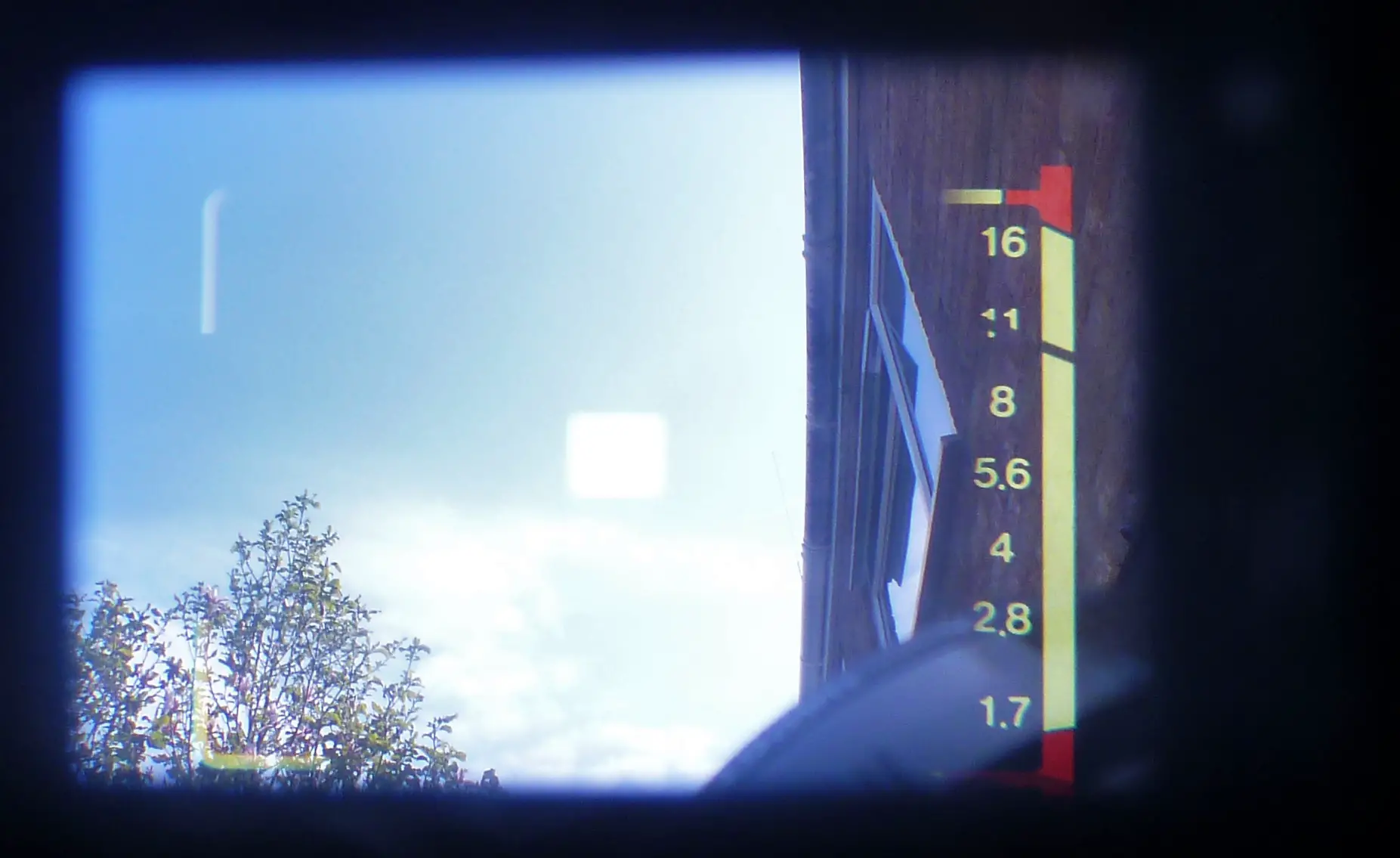
The Light meter
Fitted with a PX675 type battery, the meter needle was responsive and the yellow-tinted rangefinder patch was clear and useable. The Vivitar 35ES does require a battery to meter and automatically adjust aperture, and the instruction manual states EV range is EV4.5 (f/1.7 at 1/8 second) to EV17 (f16 at1/500) with ASA100 film. Although the camera shutter can operate without power I believe it does so at the smallest aperture of f/16, so decent exposures could be a problem if the battery dies on you. The CdS light sensor is at the top of the lens and within the filter ring so metering should remain correct with filter attached. ASA speeds from 25 to 800 are adjusted with a notched lever under the lens which you have to press down firmly to move and is unlikely to be accidentally shifted.
Shooting with Vivitar 35ES
Focusing the Vivitar 35ES is assisted by a lever on the side of the lens which moves smoothly in an arc of about 2.5cm, and minimum subject distance is just under 1 meter. Available shutter speeds are B, 1/8, 15, 30, 60, 125, 250 and 500. A nice touch is that the B setting is locked out unless you press a small silver tab on the lens.
There’s a self-timer which worked fine when I tested it, but this model is over 35 years old and I’m wary of using it in case it suddenly decides to stop mid-cycle and cause a problem. The adjustable ring closest to the body is marked with GN numbers and is a flash compensation system, but I’m not intending to try it as I prefer natural light photography. On this point, because there’s no moving mirror causing vibration I felt comfortable shooting at speeds as low as 1/15 second, which is one of the great advantages of using a rangefinder. The shutter button also has a cable release thread which is handy for longer exposures. The shutter is quiet too.
Concluding thoughts
Overall, the Vivitar 35ES is a pleasing little rangefinder you can just about fit in a jacket pocket (although it is quite heavy so it’ll be a lopsided jacket), and the f/1.7 lens makes it particularly suitable for lower light conditions such as interiors.
So was buying the Vivitar 35ES a back door to quality optics on a well-made body at a lower price? The camera seems robust, well-designed and operation is straightforward enough so it’s quick to use. I’m generally happy with lens sharpness and although you can’t manually adjust aperture I’ve really appreciated that opening up to f/1.7 is available to the metering system when needed. In short, if you are looking for a good quality smallish rangefinder with a nice bright lens at a reasonable price then this Vivitar 35ES is a candidate worth considering.
So far I’ve only shot two rolls of Ilford HP5 with a yellow filter but at some point I’ll use Kodak Portra or Ektar to see how the lens renders colour. Here are a selection of photos processed by Peak Imaging and Snappy Snaps (Oxford) and negatives scanned using an Epson V370.

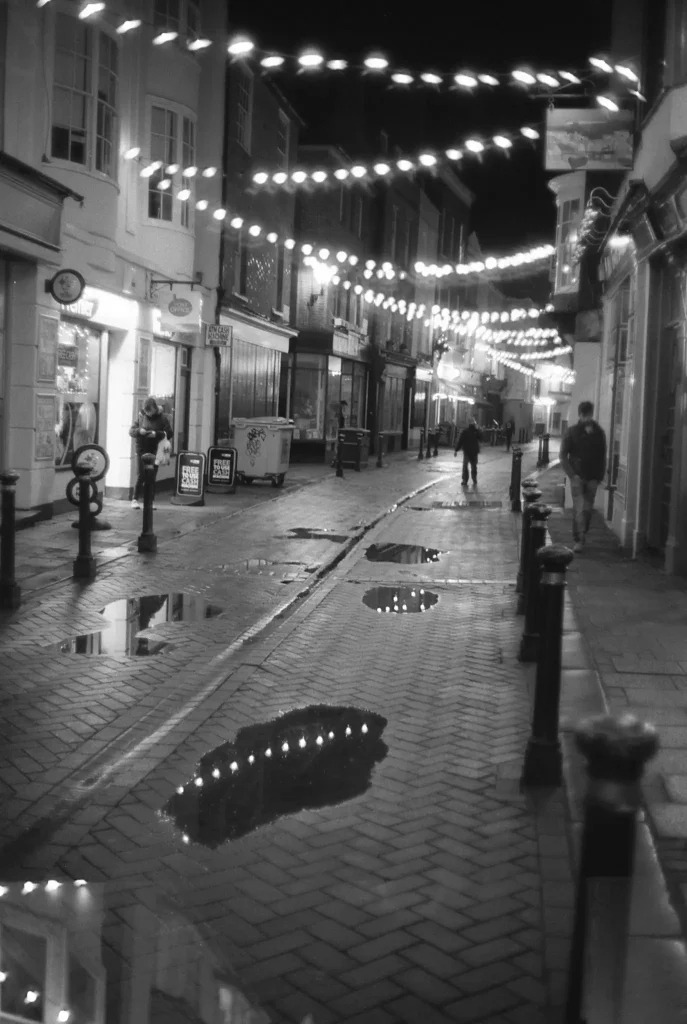
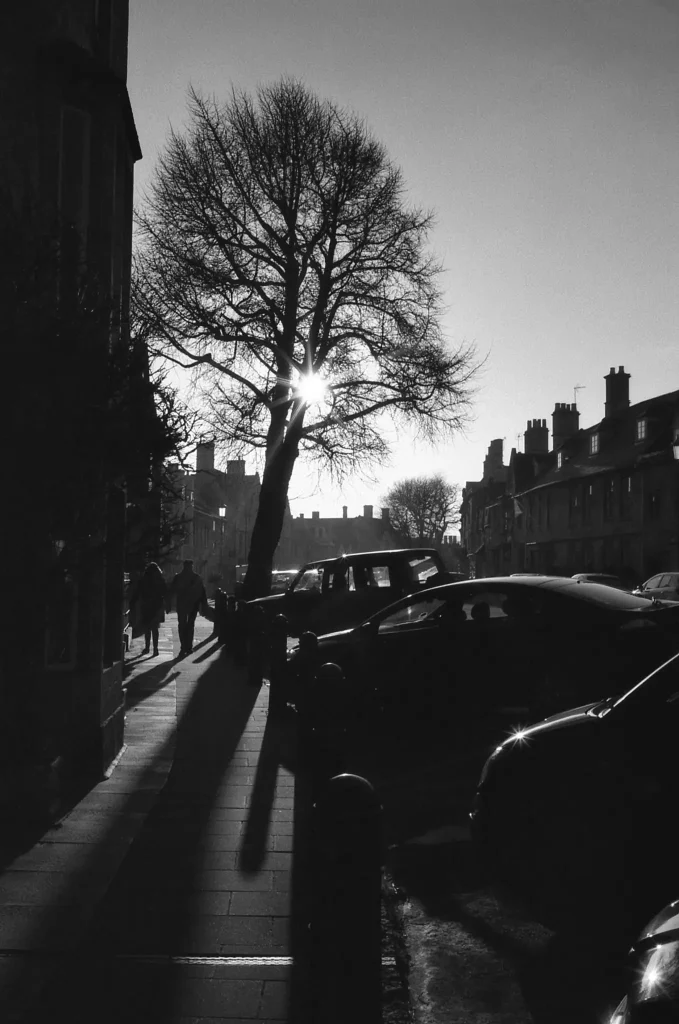
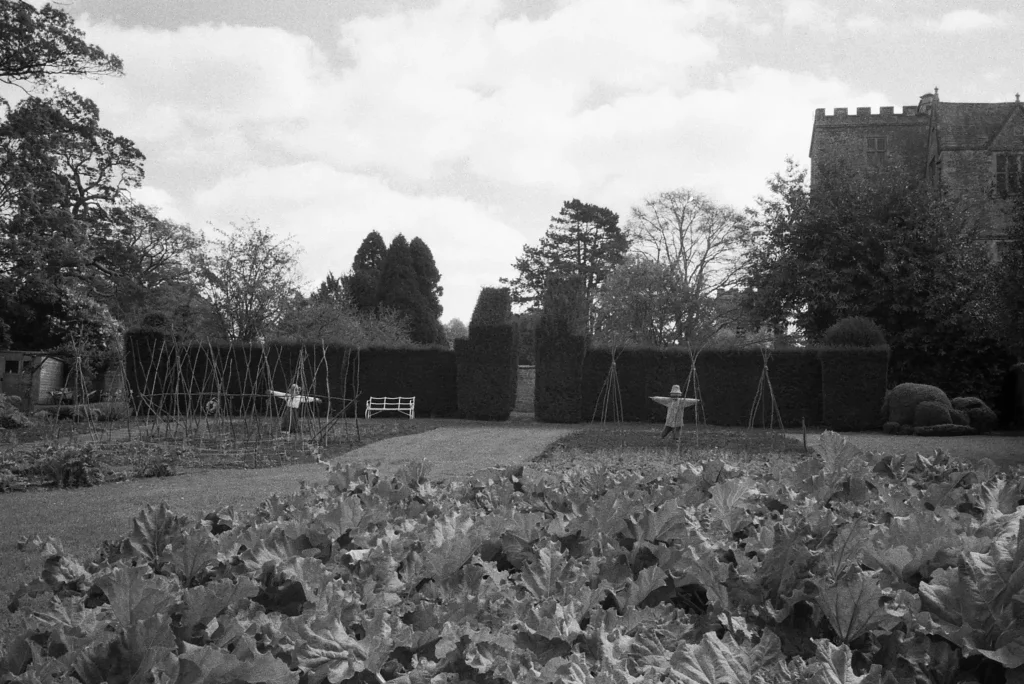
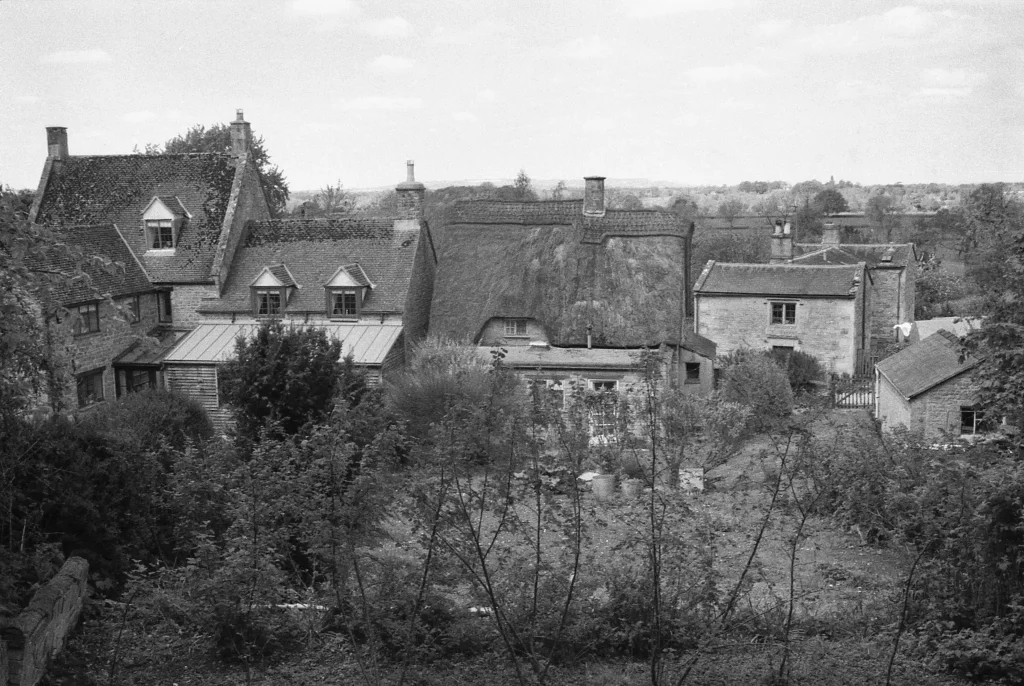
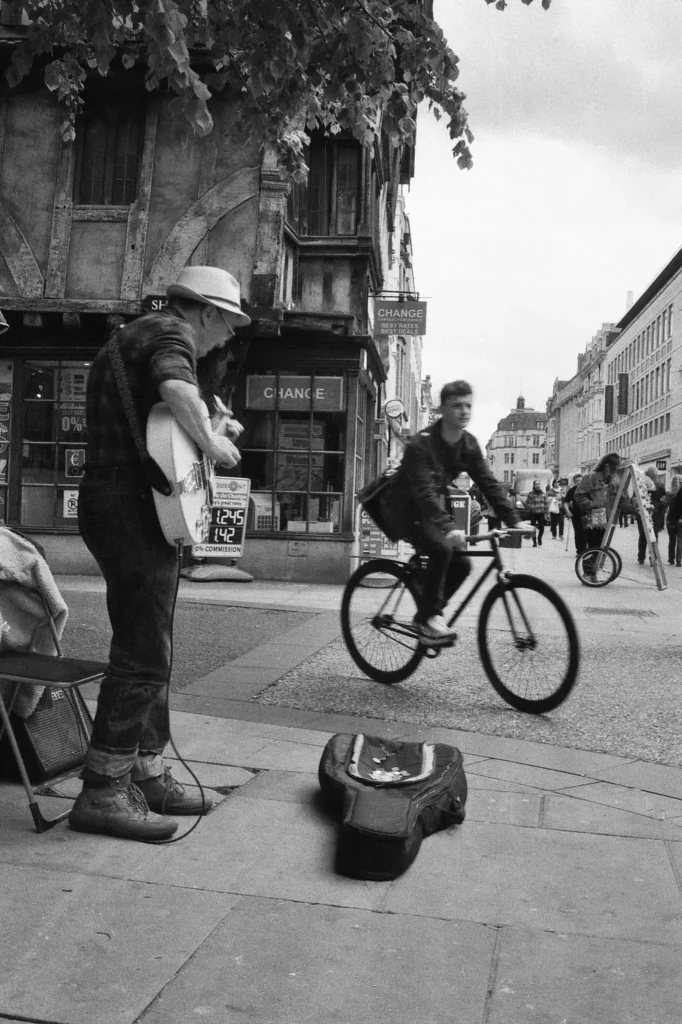
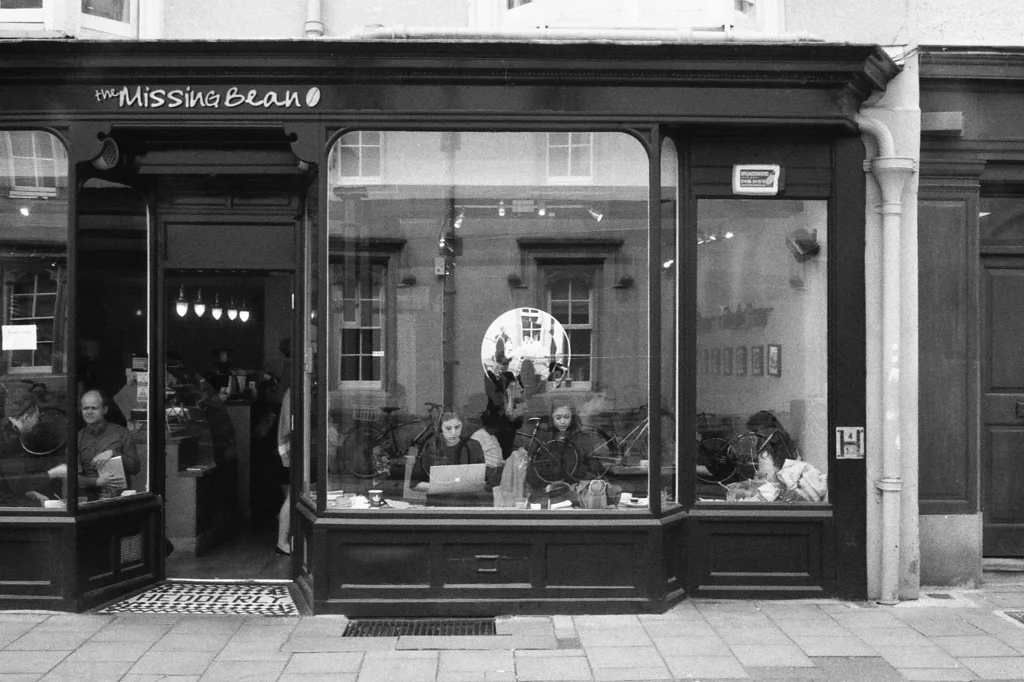
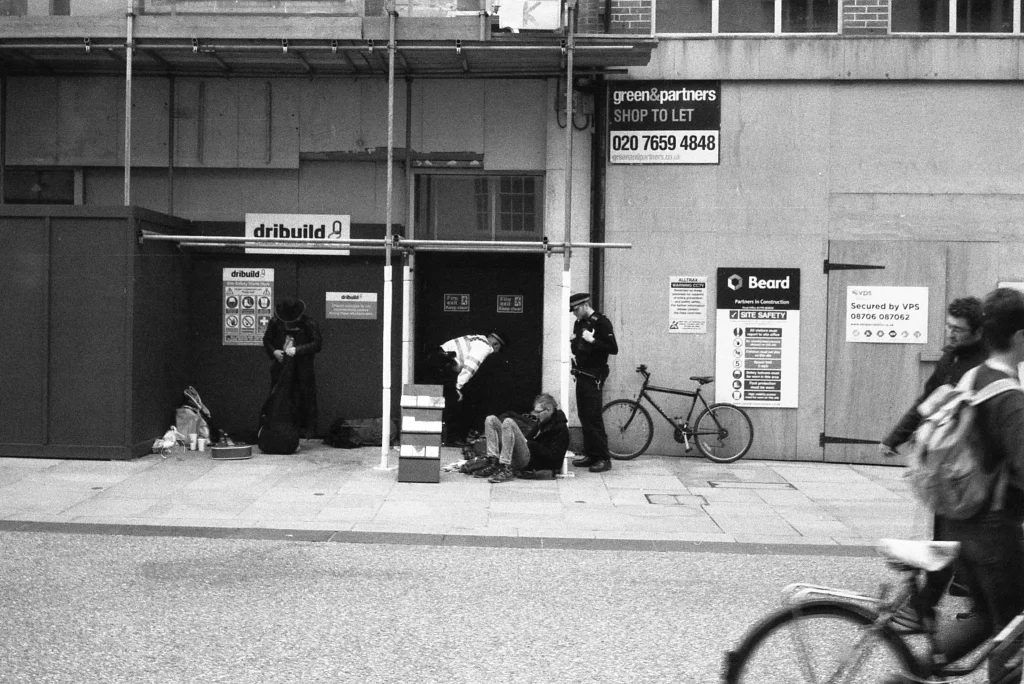
Share this post:
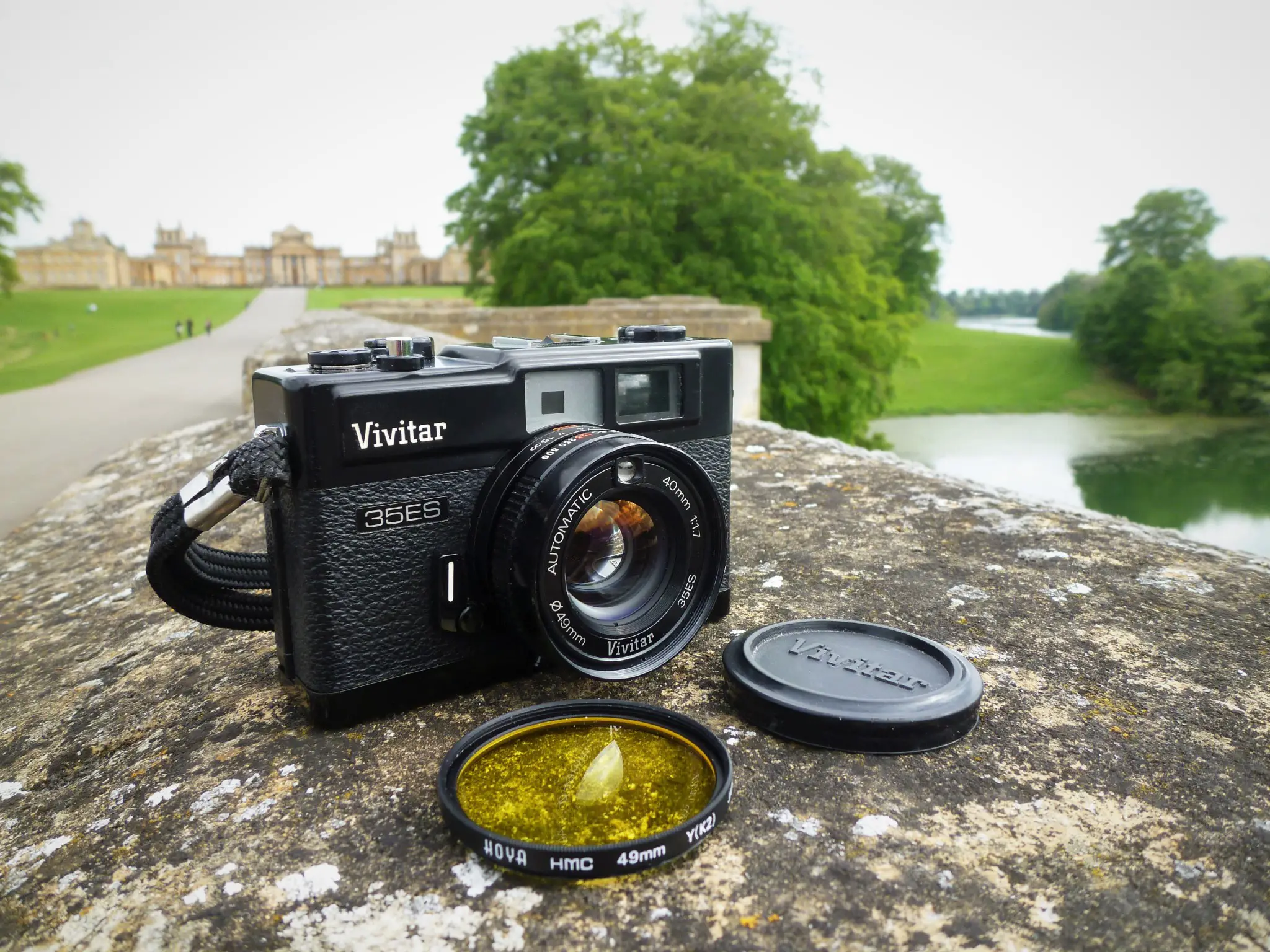








Comments
Erik Prestmo on Vivitar 35ES Review – A short test – by Charles Higham
Comment posted: 21/05/2016
I develop ALL my films myself, and scan them, nowadays as soon as possible, and I'm also in the process of scanning 1000's of my own negatives and negatives and pictures from others, as part of a local historical society.
My question is : Why is it that all pictures shown in this blog has been cleaned so thoroughly in Photoshop or similar software?
I can se few of the normal blemishes, dust, hair and scanner artifacts that I see in my raw scans all the time.
It is impossible to say much about this or that cameras qualities if all we see is software output from a drawing program.......
Comment posted: 21/05/2016
Comment posted: 21/05/2016
Giorgio on Vivitar 35ES Review – A short test – by Charles Higham
Comment posted: 22/05/2016
Have a look if you want to!
https://itsalwaysluck.wordpress.com/2014/01/20/street-review-the-revue-400-se-vivitar-35es-prinz-35er-minolta-hi-matic-7sii-konica-auto-s3/
Comment posted: 22/05/2016
Vivitar 35ES (1978) - mike eckman dot com on Vivitar 35ES Review – A short test – by Charles Higham
Comment posted: 09/04/2018
Russ on Vivitar 35ES Review – A short test – by Charles Higham
Comment posted: 20/05/2018
Charles Higham on Vivitar 35ES Review – A short test – by Charles Higham
Comment posted: 20/05/2018
Comment posted: 20/05/2018
Comment posted: 20/05/2018
Don on Vivitar 35ES Review – A short test – by Charles Higham
Comment posted: 23/03/2020
Charles Higham on Vivitar 35ES Review – A short test – by Charles Higham
Comment posted: 24/03/2020